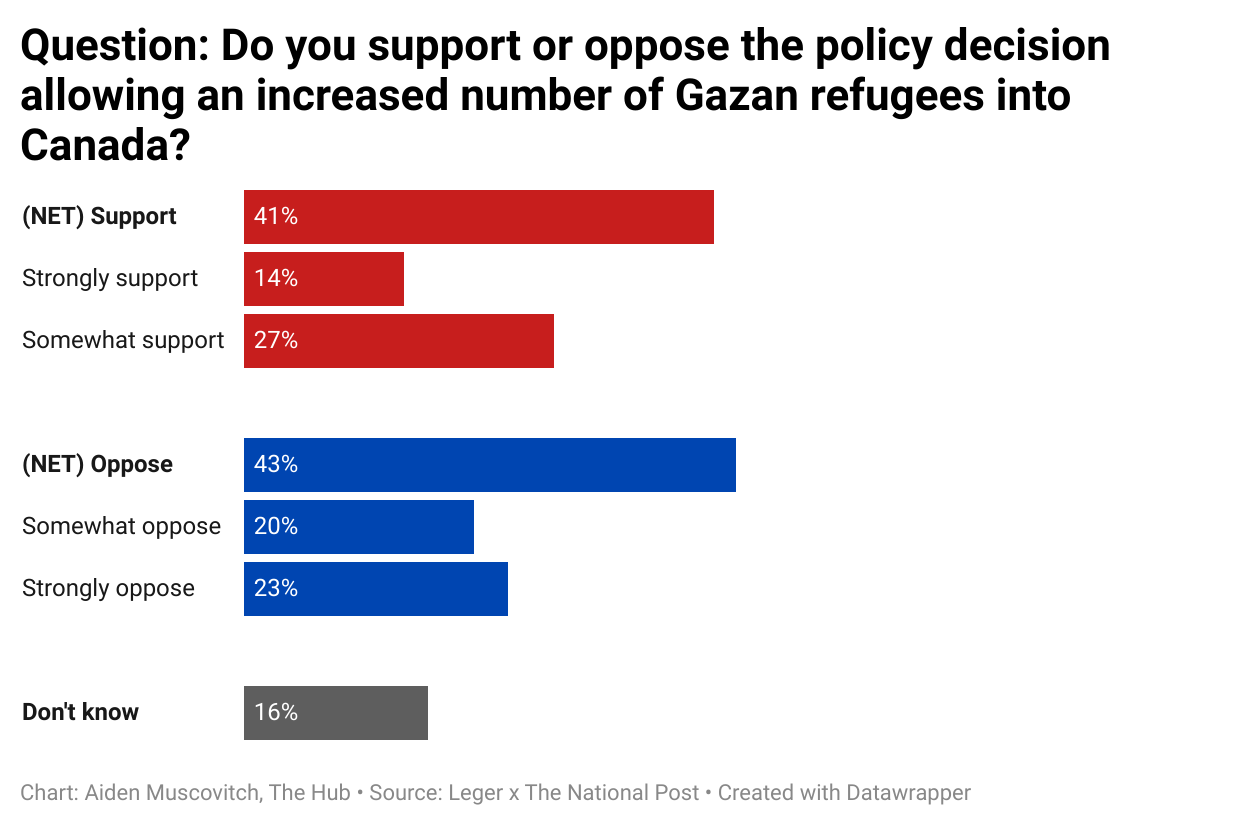This is The Week in Polling, your Saturday dose of interesting numbers from top pollsters in Canada and around the world, curated by The Hub. Here’s what we’re looking at this week.
Canadians are split on the government’s decision to raise Gazan refugee cap
Due to the war in Israel and Gaza that has occurred since October 7, the Canadian government has announced they will be increasing the number of Gazans who are able to be processed for temporary visas, now allowing 5,000 Gazans to immigrate to Canada. This decision only regards Gazans who have relatives in Canada. Canadians are split as to whether to support this decision or oppose it.
The Canadian government allowed Egyptian Ahmed Fouad Mostafa Eldidi and his son Mostafa Eldidi into Canada years before being arrested for allegedly being in the late stages of planning a terrorist attack to happen in Toronto. It was later found that Eldidi was permitted into Canada after he was allegedly featured as an assailant in a gruesome ISIS video. The government claims that they were unaware of the video’s existence.
Still, the government says that his security screening for his citizenship to be granted resulted in a “favourable recommendation.” More than 60 percent of Canadians are not confident that the government of Canada is thoroughly screening immigrants from the Middle East.
American politicians are not confident in the government either. Six U.S. Senators, including Marco Rubio and Ted Cruz, recently warned the Canadian government that this decision could give Gazans with ties to Hamas easy access to the United States.










